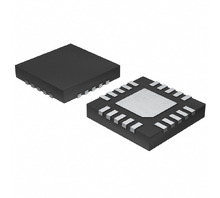Manufacturer Part Number
MAX16813ATP/V+T
Manufacturer
Analog Devices
Introduction
The MAX16813ATP/V+T from Analog Devices is a versatile, high-efficiency, power management integrated circuit (PMIC) LED driver designed primarily for automotive and lighting applications.
Product Features and Performance
Operates over a wide input voltage range from 4.75V to 40V.
Supports SEPIC and Step-Up (Boost) topologies.
Does not have internal switches, allowing flexibility in design.
Capable of driving up to 4 outputs simultaneously.
Adjustable frequency range between 200kHz and 2MHz.
Offers Pulse Width Modulation (PWM) dimming feature.
Product Advantages
High efficiency and flexibility in controlling LED brightness.
Improved thermal performance due to exposed pad package.
Suitable for harsh automotive environments with its wide operating temperature range.
Compliance with AEC-Q100 standards ensures automotive-grade reliability.
Key Technical Parameters
Minimum Voltage Supply: 4.75V
Maximum Voltage Supply: 40V
Output Current per Channel: 150mA
Operating Frequency: 200kHz to 2MHz
Operating Temperature Range: -40°C to 125°C
Quality and Safety Features
AEC-Q100 qualified for automotive applications.
Enhanced thermal management with exposed WFQFN pad.
Compatibility
Suitable for various automotive and lighting systems due to its wide input voltage range and adjustable frequency.
Application Areas
Automotive lighting systems including backlight and headlights.
General purpose LED lighting applications requiring high efficiency and reliability.
Product Lifecycle
Currently in an active status with no indication of nearing discontinuation.
Availability of replacements or upgrades will depend on future product development.
Several Key Reasons to Choose This Product
High reliability and efficiency in LED driving applications.
Flexible design options with SEPIC and Boost topologies.
Wide input voltage range accommodating varying power systems.
Automotive-grade quality ensuring durability in harsh environments.
High output accuracy and flexibility with PWM dimming.


 MAX16813ATPAnalog Devices / Maxim Integrated
MAX16813ATPAnalog Devices / Maxim Integrated MAX1680ESA+TAnalog Devices Inc./Maxim IntegratedIC REG CHARGE PUMP INV 8SOIC
MAX1680ESA+TAnalog Devices Inc./Maxim IntegratedIC REG CHARGE PUMP INV 8SOIC MAX16813AUP/V+TAnalog Devices Inc./Maxim IntegratedIC LED DRVR CTRLR PWM 20TSSOP
MAX16813AUP/V+TAnalog Devices Inc./Maxim IntegratedIC LED DRVR CTRLR PWM 20TSSOP